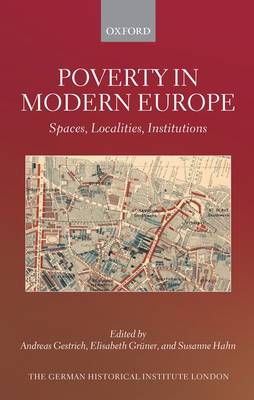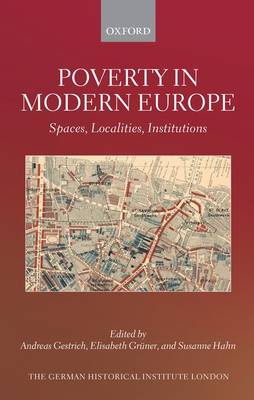
Je cadeautjes zeker op tijd in huis hebben voor de feestdagen? Kom langs in onze winkels en vind het perfecte geschenk!
- Afhalen na 1 uur in een winkel met voorraad
- Gratis thuislevering in België vanaf € 30
- Ruim aanbod met 7 miljoen producten
Je cadeautjes zeker op tijd in huis hebben voor de feestdagen? Kom langs in onze winkels en vind het perfecte geschenk!
- Afhalen na 1 uur in een winkel met voorraad
- Gratis thuislevering in België vanaf € 30
- Ruim aanbod met 7 miljoen producten
Zoeken
Poverty in Modern Europe
Spaces, Localities, Institutions
€ 169,45
+ 338 punten
Omschrijving
Poverty in Modern Europe explores the spatial dimensions of poverty in nineteenth and twentieth-century Europe. Its essays focus on a variety of regional, local, and institutional settings and apply different approaches and methods, such as micro history, historical geography, network analysis, and the study of political and academic expert discourses. They are grouped into four sections. The first concentrates on the question of how it was that within the same national legal framework, poverty could be administered and experienced so differently at regional and local levels. Although the discussion of 'welfare regionalism' has been accepted as an important perspective in both the social sciences and social history, it has not resulted in many comparative studies or produced a valid framework for comparisons. The following three sections ask how urban and rural spaces of poverty were constructed by political, academic, and administrative discourses and how 'localities' of poor relief were experienced by the poor. Many essays look into the spatial dimensions of processes of inclusion and exclusion. They examine the role played by institutions (such as workhouses) and by social networks (such as families and neighbourhoods), and are particularly interested in what has frequently, albeit not uncontroversially, been termed the 'agency' of the poor and its spatial dimensions. The volume tests different approaches in different countries and suggests a number of aspects and yardsticks to consider when comparing regional or local differences. While the main geographical focus is on English-speaking and German-speaking Europe, the volume also contains comparative perspectives on France and Russia.
Specificaties
Betrokkenen
- Uitgeverij:
Inhoud
- Aantal bladzijden:
- 375
- Taal:
- Engels
- Reeks:
Eigenschappen
- Productcode (EAN):
- 9780192867841
- Verschijningsdatum:
- 19/12/2022
- Uitvoering:
- Hardcover
- Formaat:
- Genaaid
- Afmetingen:
- 152 mm x 206 mm
- Gewicht:
- 771 g

Alleen bij Standaard Boekhandel
+ 338 punten op je klantenkaart van Standaard Boekhandel
Beoordelingen
We publiceren alleen reviews die voldoen aan de voorwaarden voor reviews. Bekijk onze voorwaarden voor reviews.








